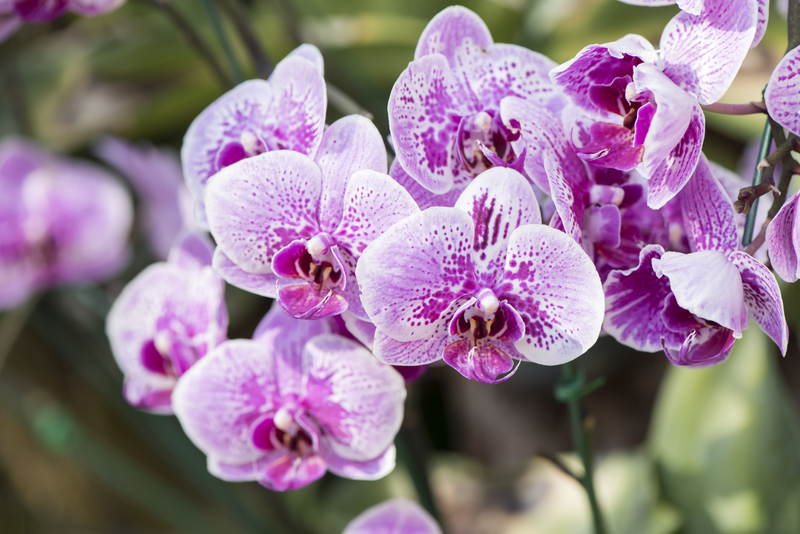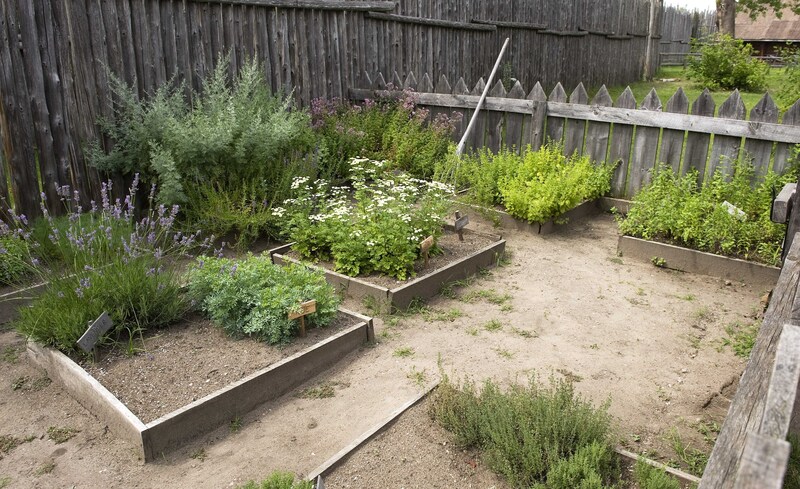Experience a Weed-Free Garden with 3 Strategic Tips
Posted on 11/09/2025
Experience a Weed-Free Garden with 3 Strategic Tips
Are you dreaming of a weed-free garden that lets your favorite plants flourish without competition? Weeds can choke out vegetables, flowers, and shrubs, robbing them of nutrients, sunlight, and water. But with the right approach, you can minimize or even eliminate those pesky invaders. Discover three proven strategies that every gardener ought to know for achieving a lush, vibrant, and healthy garden. Let's dive in!
Why a Weed-Free Garden Matters
Maintaining a garden without weeds is not just about aesthetics--it improves plant health, increases yields, and reduces maintenance. Weeds rapidly deplete soil resources, introduce pests, and even spread diseases. Strategic weed control helps ensure your garden's long-term vitality and beauty.
Main Problems Caused by Weeds
- Competition for Water and Nutrients: Weeds deprive your desired plants, stunting their growth.
- Increased Pest Activity: Weeds can harbor pests, providing them refuge and an easy access point to your crops.
- Disease Transmission: Certain weeds are known vectors for plant diseases that can spread to your garden.
- Lower Quality of Produce: Excessive weed pressure can reduce both the quantity and quality of fruits and vegetables.
By applying these strategic weed management tips, you'll enjoy a cleaner, stronger garden ecosystem and spend less time pulling unwanted plants.

Tip #1: Apply Mulch Generously
One of the most effective ways to achieve a weed-free gardening experience is through strategic mulching. Mulch acts as a physical barrier, making it difficult for weeds to access sunlight and germinate. Plus, it helps retain moisture and regulate soil temperature.
Best Types of Mulch for Weed Suppression
- Organic Mulches: Shredded bark, straw, grass clippings, compost, and wood chips not only suppress weeds but enrich the soil over time.
- Inorganic Mulches: Landscape fabric, black plastic, and gravel are durable mulch options for weed control in flower beds, paths, or around shrubs.
How to Mulch Effectively in Your Garden
-
Clear Away Existing Weeds:
Before applying mulch, remove visible weeds by hand or with a hoe to prevent regrowth. -
Apply the Right Depth:
Spread 2-4 inches of mulch over garden beds. Too little won't block sunlight; too much can suffocate roots. -
Avoid Piling Against Plant Stems:
Keep mulch a few inches away from stems and trunks to prevent rot and pest problems. -
Replenish Regularly:
Renew organic mulches as they decompose to retain effectiveness.
With proper mulching, you'll notice fewer weeds sprouting and a dramatic improvement in soil health. This technique is essential for those committed to weed-free garden maintenance.
Tip #2: Smart Planting Techniques
Another powerful, natural weed control method is densely planting crops and ornamentals. A healthy canopy shades the soil, preventing light from reaching weed seeds. With "living mulch," your garden can choke out weeds before they start.
Principles for Weed-Suppressing Planting
- Close Spacing: Minimize gaps between plants to reduce areas where weeds can establish.
- Sow Ground Covers: Use fast-growing ground covers, such as clover, thyme, or creeping Jenny, as a living mulch.
- Layer Heights: Plant taller vegetables or flowers alongside shorter ones in a way that creates layered shade.
- Companion Planting: Mix species with similar growing needs to maximize coverage and minimize weed-prone bare spots.
Examples of Effective Weed-Suppressing Plant Layouts
Vegetable Beds: Interplant bush beans with potatoes or squash; the broad leaves act as living weed barriers.
Flower Borders: Combine perennials like daylilies, hostas, or astilbe to densely cover the soil.
Pathways: Fill garden paths with low-growing herbs or ground covers instead of leaving them bare.
By implementing these strategic planting methods, you'll not only enrich your garden's appearance but also maintain a weed-free landscape.
Tip #3: Consistent and Targeted Weeding
Even with mulch and close planting, some weeds may still appear. Regular and strategic weeding is crucial for ongoing weed control in gardens. The key is to act early, before weeds mature and set seed.
How to Weed Efficiently and Effectively
- Weed Early and Often: Young weeds are easier to pull; dedicate a few minutes each week for a quick patrol.
- Target After Rain or Watering: Damp soil makes it easier to remove the entire root system.
- Use the Right Tools: Hand forks, hoes, and weeders can help remove deeply rooted invaders more efficiently.
- Dispose of Weeds Properly: Don't leave uprooted weeds on the soil surface; they can re-root. Compost if not flowering/seeding, otherwise remove.
Benefits of Proactive Weeding
Consistent weeding prevents:
- Weeds from flowering and spreading seeds, multiplying your future workload.
- Roots from becoming ingrained in your soil, which makes removal harder.
- Undesirable competition with your desired crops and ornamentals.
Staying on top of weed removal will keep your garden free of invasive plants and protect your investment of time and love!
Bonus Tips for a Low-Weed Garden
Want to achieve complete weed management? Here are a few more secrets used by master gardeners for long-lasting results:
- Regularly Inspect Borders: Most weeds invade from garden edges. Keep borders neat and free of encroaching plants.
- Promote Healthy Soil: Fertile, well-structured soil encourages vigorous plant growth, which naturally crowds out weeds.
- Limit Soil Disturbance: Tilling brings dormant weed seeds to the surface. Try a no-till or low-till approach when possible.
- Solarize Weedy Areas: Cover infested spots with clear plastic for several weeks in hot weather to bake and kill weed seeds.
- Use Cover Crops in Off-Season: Plant fast growers like buckwheat or rye during fallow periods to shade soil and add organic matter.
Common Weed Myths Debunked
Let's separate fact from fiction when it comes to garden weed control:
- "All weeds can be removed with herbicides." - Not true! Chemicals can harm beneficial organisms and aren't always effective on established or perennial weeds. Integrated approaches work best.
- "Pulling the top of the weed is enough." - No, most perennial weeds regrow from roots or tubers left in the ground. Get the whole plant whenever possible.
- "Mulching once is sufficient for the season." - Mulch decomposes or shifts with time. Top up as needed to maintain a weed barrier.

Frequently Asked Questions About Weed-Free Gardening
- What is the best time to weed the garden?
The optimal time is after rain or irrigation, when the soil is soft. Weed early in the growing season to prevent rapid spread. - Is organic mulch better for weed control?
Both organic and inorganic mulches are effective, but organic mulches improve soil health while suppressing weeds. - Can ground covers replace mulch?
Ground covers act as "living mulch." Combining both approaches offers maximum protection from weeds.
Conclusion: A Weed-Free Garden is Within Your Reach
Achieving a low-maintenance, weed-free oasis in your backyard might seem overwhelming, but with these three tried-and-true strategies you'll drastically reduce weed pressure and boost your garden's beauty. Apply mulch, master smart planting, and weed proactively--and watch your plants thrive.
Make these strategic tips part of your regular garden routine and soon you'll spend less time battling weeds--and more time enjoying your flourishing, vibrant landscape. For more expert tips and inspiration on weed-free gardening, keep exploring our site!
```


